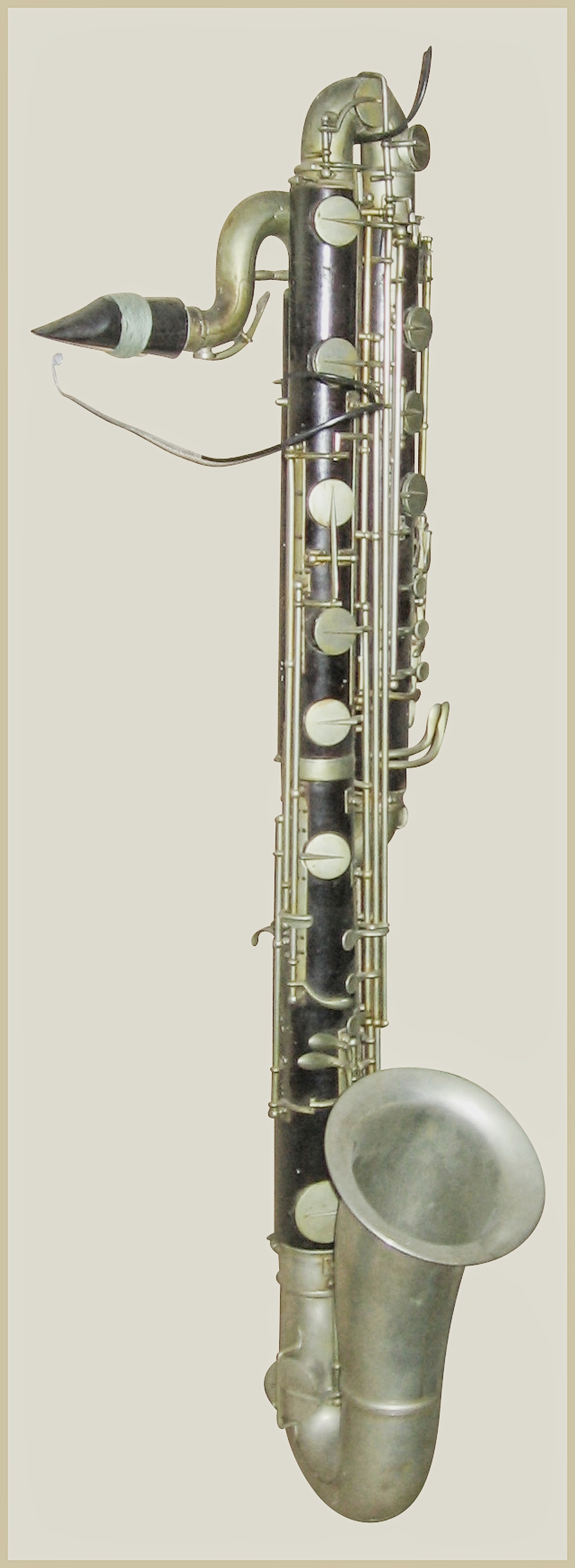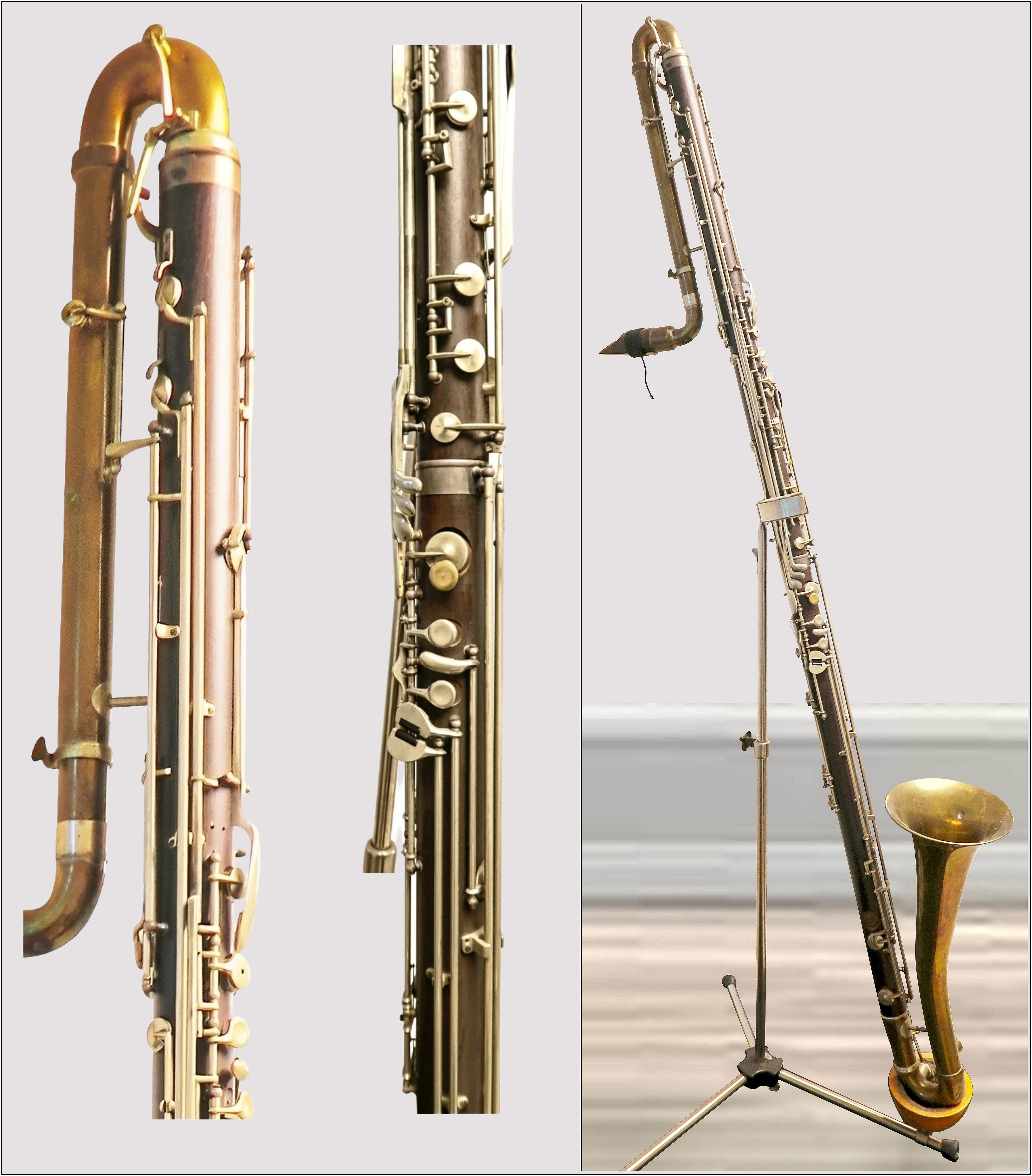Contrabass clarinet
Enlarge text Shrink text- Work cat.: Heim, N.M. Invocation, c1993:t.p. (for contra-bass clarinet)
- New Grove dict. mus. inst.(contrabass clarinet, sometimes called pedal clarinet)
- Marcuse. Musical instruments, 1975(Contrabass clarinet)
- 2001545331: Ritter, R. Long, long ago, c1999(B-flat contra-bass clarinet)
- 2001545332: Ritter, R. Long, long ago, c1999(E-flat contra-alto clarinet)
- Grovemusic.com WWW site, Apr. 15, 2003(Contrabass clarinet: A member of the clarinet family pitched two octaves below the soprano clarinet in B♭ (or one below the B♭ bass clarinet) or an octave below the alto clarinet (in E♭). The B♭ variety is sometimes called "pedal clarinet")
The contrabass clarinet (also pedal clarinet, after the pedals of pipe organs) and contra-alto clarinet are the two largest members of the clarinet family that are in common usage. Modern contrabass clarinets are transposing instruments pitched in B♭, sounding two octaves lower than the common B♭ soprano clarinet and one octave below the bass clarinet. Some contrabass clarinet models have extra keys to extend the range down to low written E♭3, D3 or C3. This gives a tessitura written range, notated in treble clef, of C3 – F6, which sounds B♭0 – E♭4. Some early instruments were pitched in C; Arnold Schoenberg's Fünf Orchesterstücke specifies a contrabass clarinet in A, but there is no evidence such an instrument has ever existed. The smaller E♭ contra-alto clarinet is sometimes referred to as the "E♭ contrabass clarinet" and is pitched one octave lower than the E♭ alto clarinet. Two models of subcontrabass clarinet (the octocontra-alto and octocontrabass) were built as prototypes by Leblanc in the 1930s and survive in the Leblanc museum.
Read more on Wikipedia >
 Topic
Topic







